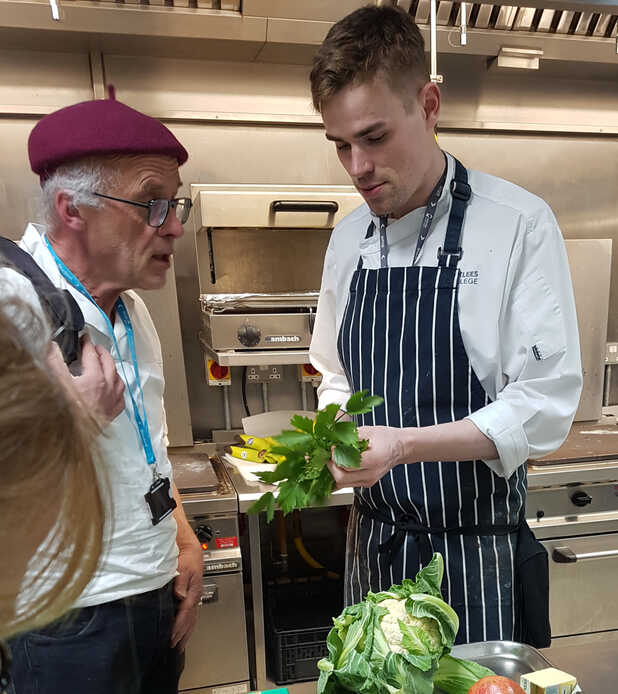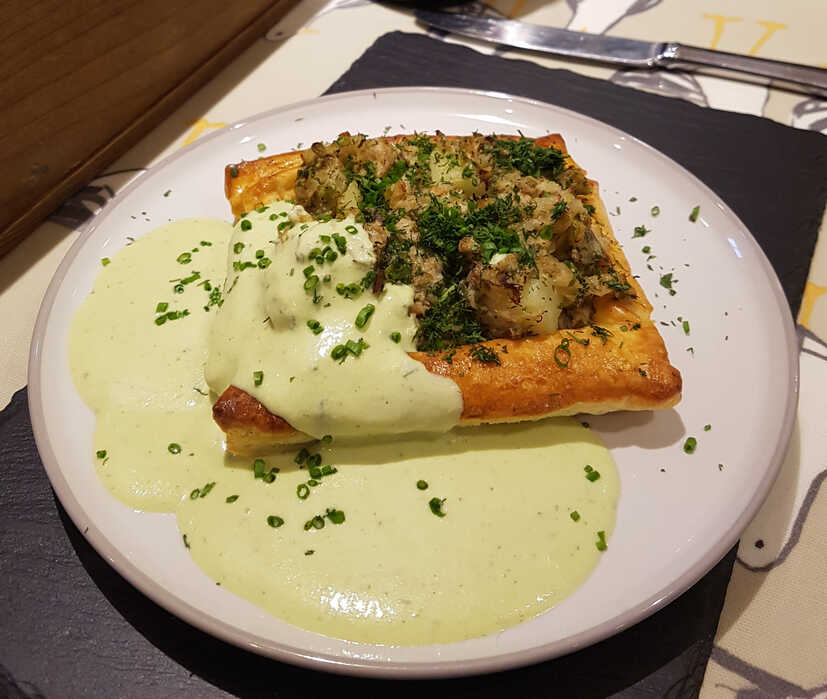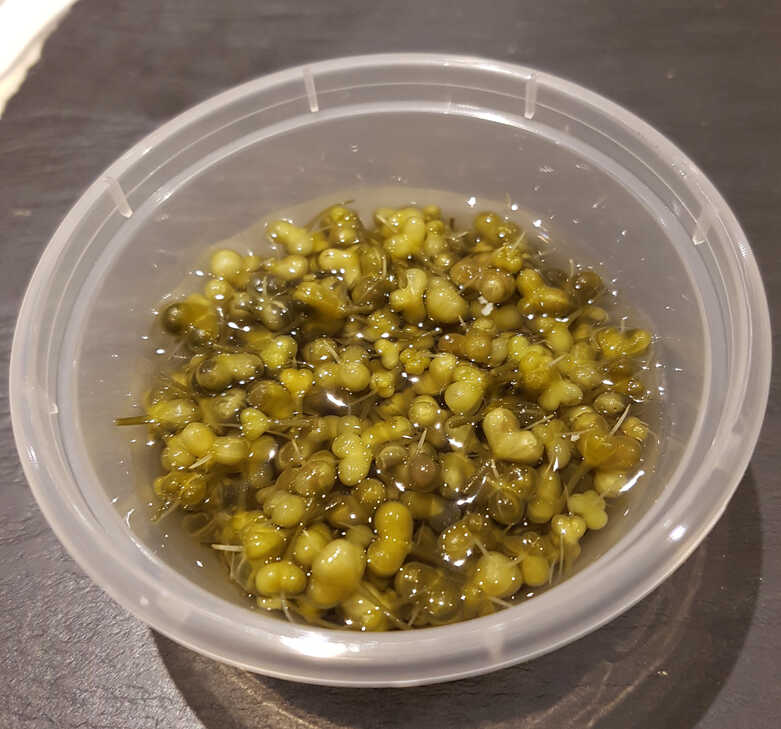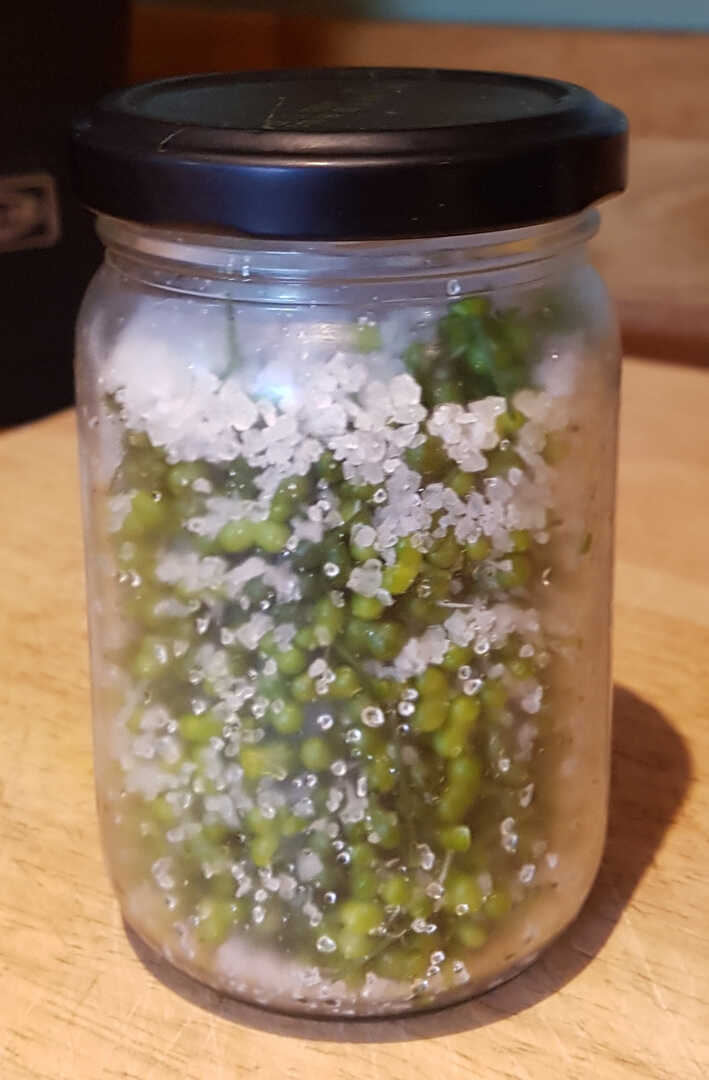Love. Age. Die.

Chris from my Culinary Master Class brought a whole bunch of lovage to class.
So I offered to give it a good home.
When life gives you lovage... Make love?
Speaking of leafy plants, as we were, it's Prairial - wild garlic season, and around here the spring woodlands become carpeted with them.
First you get their distinctively odoriferous versatile young leaves which you can just throw into a leafy salad, then as these turn heavy and coarse you get the flower buds, which you can pickle, apparently
My God, perhaps I could live off them?
So I offered to give it a good home.
When life gives you lovage... Make love?
Speaking of leafy plants, as we were, it's Prairial - wild garlic season, and around here the spring woodlands become carpeted with them.
First you get their distinctively odoriferous versatile young leaves which you can just throw into a leafy salad, then as these turn heavy and coarse you get the flower buds, which you can pickle, apparently
And having now tried some I can attest to their potency!
Then come the flowers.
I don't know about eating them
Then you get the seeds. Which you can also pickle.My God, perhaps I could live off them?
Chilled Cucumber and Lovage Soup
soup veg
Not a bad soup - surprisingly rich. The boiled egg garnish really works well.
Serves 4
Ingredients
- 3 long cucumbers, peeled
- 3 tbsp of crème fraîche
- 350ml of natural yoghurt
- ½ lemon, juiced
- 75ml of olive oil, good-quality
- 3 sprigs of fresh lovage, leaves picked
- salt
- ground white pepper
Garnishes:- hard-boiled eggs, chopped
- chives, chopped
- lemon zest
Cut the cucumbers in half lengthways and scrape out the seeds with a teaspoon.
Discard the seeds.
Roughly chop into chunks and place in a blender.
Add the rest of the ingredients (except the garnish, if using) to the blender and season with salt and pepper.
Start initially with 12 lovage leaves.
Taste.
Is there a good balance of acidity and mellowness from the yoghurt? Add more lemon if it seems too creamy-tasting.
Can you taste the lovage enough? It should be defined but not overpowering.
Add the lovage leaves cautiously, a little at a time so as not to overpower the delicate cucumber flavour
Once you’re happy you’ve achieved a balanced flavour, place the soup in the fridge for at least 2 hours so that it is well-chilled before serving.
Sprinkle with chopped hard-boiled egg, minced chives, and lemon zest to garnish, if desired.
Discard the seeds.
Roughly chop into chunks and place in a blender.
Add the rest of the ingredients (except the garnish, if using) to the blender and season with salt and pepper.
Start initially with 12 lovage leaves.
Good advice - though I ended up using considerably more. Perhaps double.
Blend until completely smooth — the soup should have a pleasing, pale green colour.Taste.
Is there a good balance of acidity and mellowness from the yoghurt? Add more lemon if it seems too creamy-tasting.
Can you taste the lovage enough? It should be defined but not overpowering.
Add the lovage leaves cautiously, a little at a time so as not to overpower the delicate cucumber flavour
Once you’re happy you’ve achieved a balanced flavour, place the soup in the fridge for at least 2 hours so that it is well-chilled before serving.
Sprinkle with chopped hard-boiled egg, minced chives, and lemon zest to garnish, if desired.
Pretty good soup. It needs a fair amount of seasoning, and quite a lot of lovage. Depending on your sensitivity to it, I suppose.
This makes quite a good sauce too if blended with Boursin cream cheese.
This makes quite a good sauce too if blended with Boursin cream cheese.
Mackerel and Lovage Tarts
fish starter snack
You can use shop-bought puff pastry. I know I did!
Though a 320g pack of ready rolled puff pastry is not enough. You'll need slightly less than twice that to make 6 or 7 10cm x 12cm tarts.
I mostly followed Hugh Fearnley-Whittingstall but adjusted the oven temperatures a bit to encourage the blind pastries to rise.
I also think the 2cm potato cubes are a little on the large side.
You won't hear me say this very often, but it could have done with more mackerel!
I cooked my mackerel under the grill, skin-side-up. Which make it easy to peel the blistered, crispy skin off when they're cooked through.
Plus you can decorate the finished tarts with shards of their skin to serve.
They also freeze well.
Though a 320g pack of ready rolled puff pastry is not enough. You'll need slightly less than twice that to make 6 or 7 10cm x 12cm tarts.
I mostly followed Hugh Fearnley-Whittingstall but adjusted the oven temperatures a bit to encourage the blind pastries to rise.
I also think the 2cm potato cubes are a little on the large side.
You won't hear me say this very often, but it could have done with more mackerel!
I cooked my mackerel under the grill, skin-side-up. Which make it easy to peel the blistered, crispy skin off when they're cooked through.
Plus you can decorate the finished tarts with shards of their skin to serve.
They also freeze well.
Serves 6
Ingredients
- 2 tbsp olive oil
- 2 onions, finely diced
- 2 bay leaves
- 3 soft lovage stems (about a stick of celery's worth), finely sliced
- 350g potatoes, peeled, cooked and cut into 2cm cubes or smaller
- 4 mackerel fillets, cooked, skinned and flaked or more!
- 1 small handful lovage leaves, finely shredded, plus extra for serving
- 2 tbsp finely chopped dill fronds, plus extra for serving
- 3 tbsp crème fraîche
- Salt and freshly ground black pepper
For the Rough Puff Pastry:- 250g unsalted butter, chilled and cut into small cubes
- 500g plain flour
- Pinch of salt
- About 150ml iced water
- 1 egg, lightly beaten with 1 tsp of milk, for glazing
- Freshly ground black pepper
First make the pastry:
Toss the butter in the flour with the salt until coated, then add just enough water (you may not need it all) to bring it together into a fairly firm dough.
Form this into a rectangular shape with your hands and, on a well-floured surface, roll it out in one direction, away from you, into a 1cm-thick rectangle.
Fold the two short ends into the middle so they overlap, like folding a letter. Give the pastry a quarter turn, repeat the rolling out five more times, then wrap in cling-film.
Rest in the fridge for an hour.
Heat the oven to 220°C/425°F/Gas Mark 7.
Put the oil in a frying pan over medium-low heat, add the onion and bay, and sauté gently until soft, about 10 minutes.
Add the lovage stems, fry for a couple of minutes, then tip into a bowl with the potato, flaked fish, lovage leaves, dill and crème fraîche.
Remove the bay, season and cool.
Roll the pastry into a rectangle about 35cm x 45cm. Cut into six smaller rectangles. Cut a 1cm strip from the edge of each and reserve.
Place the rectangles on a large baking sheet lined with parchment, and lightly brush the edges with egg wash.
Place the strips around the edges to make a border, and brush lightly with egg wash.
Prick the bases of the tarts with a fork.
Bake for 10-15 minutes until they're starting to turn golden, remove from the oven and divide the filling between the tarts, piling it up quite high.
Reduce the oven to 200°C/400°F/Gas Mark 6. Bake for five to 10 minutes until warmed through.
Scatter over dill and lovage, and serve hot or warm.
Toss the butter in the flour with the salt until coated, then add just enough water (you may not need it all) to bring it together into a fairly firm dough.
Form this into a rectangular shape with your hands and, on a well-floured surface, roll it out in one direction, away from you, into a 1cm-thick rectangle.
Fold the two short ends into the middle so they overlap, like folding a letter. Give the pastry a quarter turn, repeat the rolling out five more times, then wrap in cling-film.
Rest in the fridge for an hour.
Or just go to the shops and buy some.
Heat the oven to 220°C/425°F/Gas Mark 7.
Put the oil in a frying pan over medium-low heat, add the onion and bay, and sauté gently until soft, about 10 minutes.
Add the lovage stems, fry for a couple of minutes, then tip into a bowl with the potato, flaked fish, lovage leaves, dill and crème fraîche.
Remove the bay, season and cool.
Roll the pastry into a rectangle about 35cm x 45cm. Cut into six smaller rectangles. Cut a 1cm strip from the edge of each and reserve.
Place the rectangles on a large baking sheet lined with parchment, and lightly brush the edges with egg wash.
Place the strips around the edges to make a border, and brush lightly with egg wash.
Prick the bases of the tarts with a fork.
Bake for 10-15 minutes until they're starting to turn golden, remove from the oven and divide the filling between the tarts, piling it up quite high.
I'm trying freezing some at this stage - I'll let you know how that works out.
Yeah it works fine - you need to reheat them quite slowly or the tops will burn - about 45 minutes at Gas Mark 4/175°C/350°F.
Add the mackerel skins with 5 minutes to go if you want to crisp them up.
Reduce the oven to 200°C/400°F/Gas Mark 6. Bake for five to 10 minutes until warmed through.
Scatter over dill and lovage, and serve hot or warm.
Not bad, if a bit mild.
They are nicely complemented with a cucumber and lovage soup beaten into some boursin to make a nice rich sauce.
You can decorate the tarts with pieces of mackerel skin crisped either in the oven or under a grill.
They are nicely complemented with a cucumber and lovage soup beaten into some boursin to make a nice rich sauce.
You can decorate the tarts with pieces of mackerel skin crisped either in the oven or under a grill.
Salted Pickled Wild Garlic Seeds
pickle
A sort of poor man's caper.
Unless capers are consumer-man's pickled wild garlic?
The seeds always seem to be salted before pickling. This will draw any moisture from the seeds, keeping them firm and giving better subsequent vinegar penetration to increase the pickling effect.
Perhaps it also helps to prevent them from spoiling?
Unless capers are consumer-man's pickled wild garlic?
The seeds always seem to be salted before pickling. This will draw any moisture from the seeds, keeping them firm and giving better subsequent vinegar penetration to increase the pickling effect.
Perhaps it also helps to prevent them from spoiling?
Fills 1x300ml jar
Ingredients
- 200-250g green wild garlic seedheads (to yield approximately 150g picked seeds)
- 40g fine sea salt
- 300ml cider vinegar or white wine vinegar
- a bay leaf or two
Pick the individual seeds from the seedheads.
This requires a bit of patience, but you can speed things up with a small pair of scissors or by using a fork to strip a whole head of seeds from the main stem in one movement.
It's best to do this in a large bowl or a plastic bag - the seeds will shoot all over the place.
Don’t worry too much about any fine stems that remain attached to the seeds.
Wash the seeds thoroughly in several changes of water. Pick out any spiders or grass stalks that survive the process, then strain them into a sieve and leave to drain well.
Put a heaped tablespoon of the dry seeds into the sterilised pickling jar, and sprinkle over some of the salt.
Continue layering seeds and salt until the jar is full and all of the salt is used up. (Don’t worry too much about the salt being evenly distributed.)
Fasten the lid onto the jar, and put the jar into the fridge. Leave it there for three weeks, shaking the jar every day or so.
Once the three weeks is up, tip the salted seeds into a sieve and rinse them well. Spread them out on a clean tea towel and leave them to dry again. Meanwhile, wash and sterilise the jar again.
Put the dry wild garlic seeds back into the jar. Pour over enough vinegar to cover, fasten the lid and leave to mature for at least one month, but preferably three.
Stored in the fridge, the pickled seeds should keep for around twelve months.
This requires a bit of patience, but you can speed things up with a small pair of scissors or by using a fork to strip a whole head of seeds from the main stem in one movement.
It's best to do this in a large bowl or a plastic bag - the seeds will shoot all over the place.
Don’t worry too much about any fine stems that remain attached to the seeds.
Wash the seeds thoroughly in several changes of water. Pick out any spiders or grass stalks that survive the process, then strain them into a sieve and leave to drain well.
Put a heaped tablespoon of the dry seeds into the sterilised pickling jar, and sprinkle over some of the salt.
Continue layering seeds and salt until the jar is full and all of the salt is used up. (Don’t worry too much about the salt being evenly distributed.)
Fasten the lid onto the jar, and put the jar into the fridge. Leave it there for three weeks, shaking the jar every day or so.
Once the three weeks is up, tip the salted seeds into a sieve and rinse them well. Spread them out on a clean tea towel and leave them to dry again. Meanwhile, wash and sterilise the jar again.
Put the dry wild garlic seeds back into the jar. Pour over enough vinegar to cover, fasten the lid and leave to mature for at least one month, but preferably three.
Stored in the fridge, the pickled seeds should keep for around twelve months.
Really good!
Feel free to add a bay leaf or two.
To be honest they'll easily be ready to start eating after a couple of weeks pickling.
Feel free to add a bay leaf or two.
To be honest they'll easily be ready to start eating after a couple of weeks pickling.




